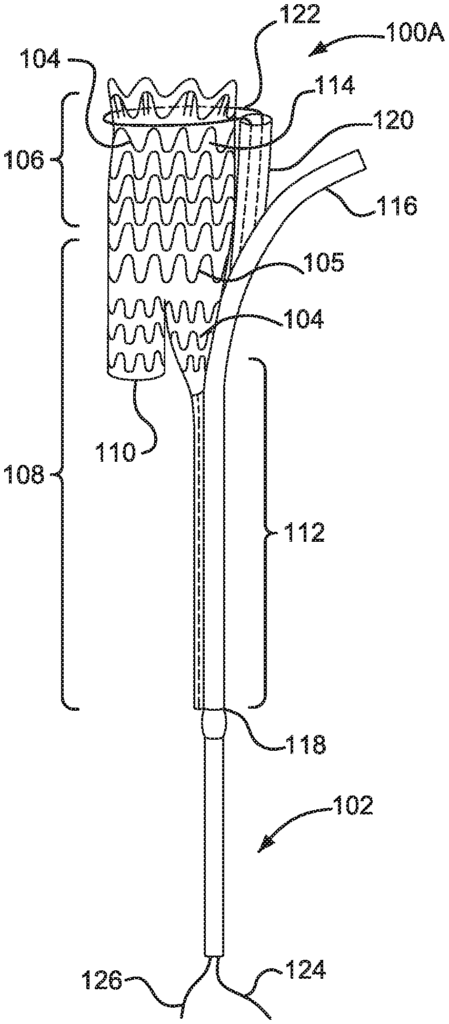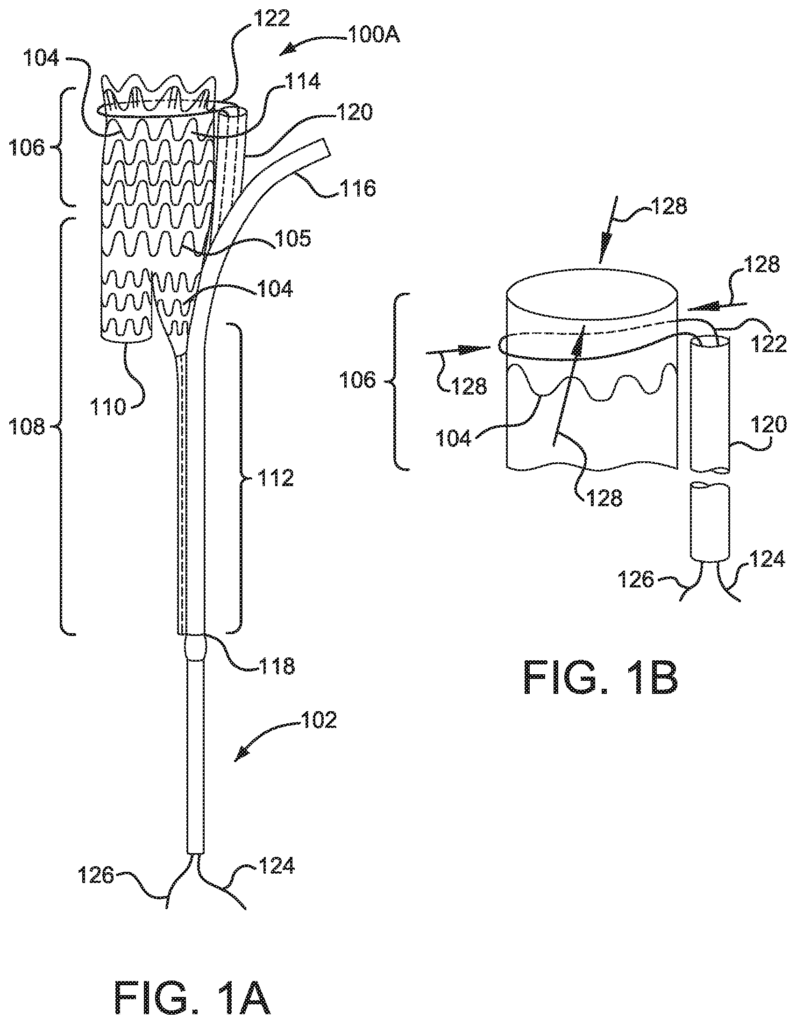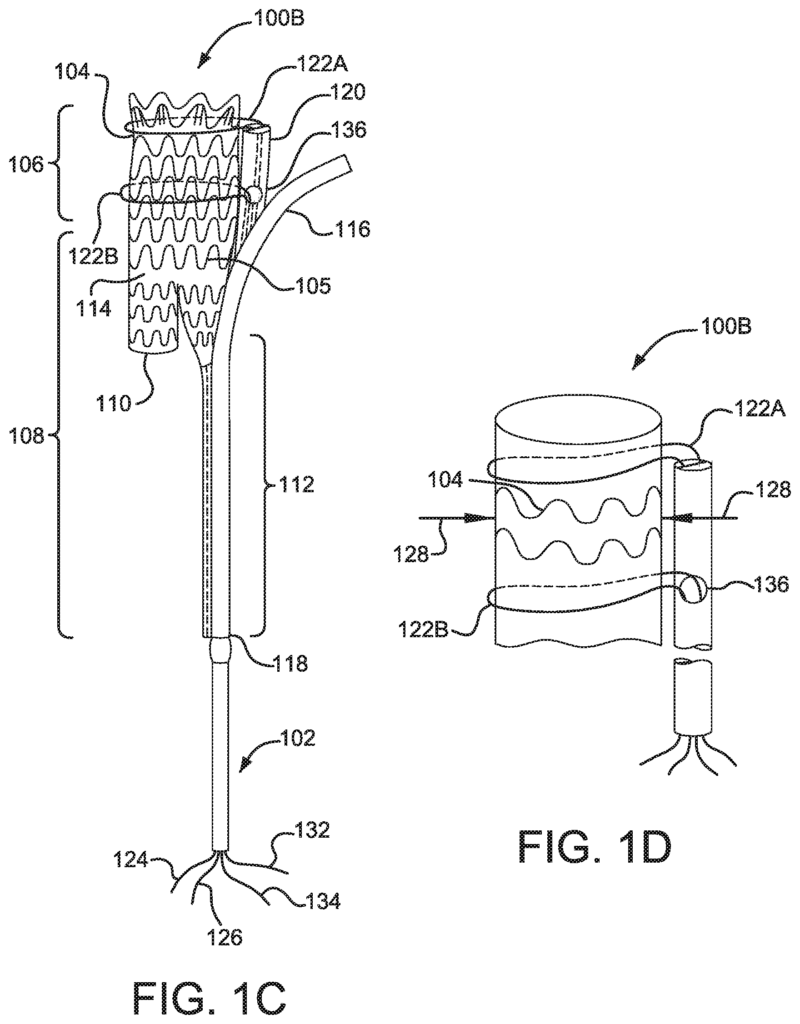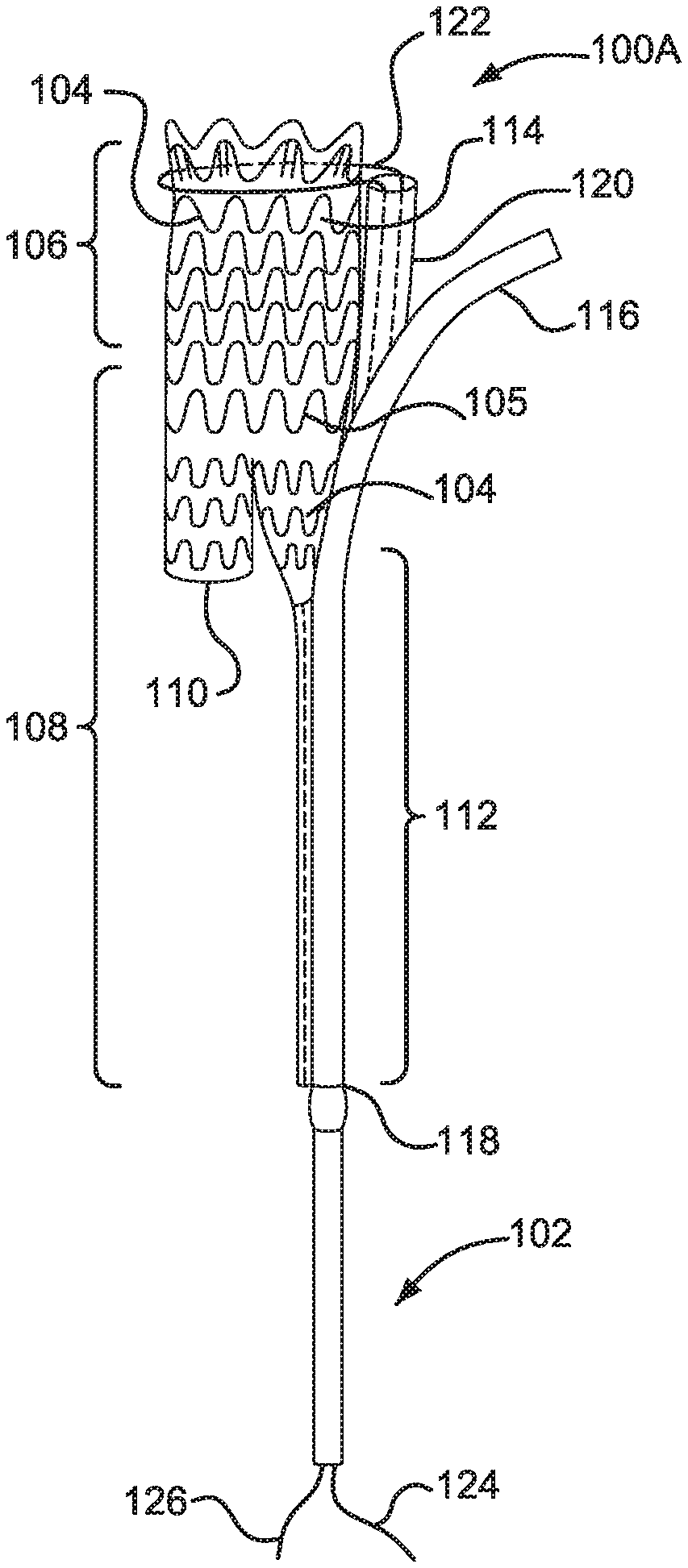Invented by Edward H. Cully, Keith M. Flury, Michelle L. Gendron, Stanislaw L. Zukowski, WL Gore and Associates Inc
Controlled deployable medical devices are designed to be deployed or inserted into the body in a controlled manner, allowing for precise positioning and controlled release of therapeutic agents. These devices can be used for a wide range of applications, including drug delivery, tissue engineering, and surgical interventions.
One of the key factors driving the market growth is the increasing prevalence of chronic diseases such as cancer, cardiovascular diseases, and diabetes. These conditions often require long-term treatment and monitoring, which can be effectively managed using controlled deployable medical devices. For example, drug-eluting stents are commonly used in the treatment of coronary artery disease, as they can deliver medication directly to the affected area, reducing the risk of restenosis.
Moreover, the rising demand for minimally invasive procedures is also fueling the market growth. Controlled deployable medical devices enable healthcare professionals to perform complex procedures with minimal trauma to the patient. This not only reduces the recovery time but also lowers the risk of complications and infections. As a result, there is a growing preference for these devices among both patients and healthcare providers.
In terms of technology, the market for controlled deployable medical devices is witnessing significant advancements. Manufacturers are constantly developing innovative methods to enhance the functionality and performance of these devices. For instance, the use of shape memory alloys allows for controlled deployment and shape change of medical devices, enabling precise positioning and targeted treatment.
Furthermore, the increasing focus on personalized medicine is driving the demand for controlled deployable medical devices. These devices can be tailored to individual patient needs, ensuring optimal treatment outcomes. For example, implantable drug delivery devices can be programmed to release medication at specific intervals, based on the patient’s condition and response to treatment.
However, there are certain challenges that need to be addressed for the market to reach its full potential. The high cost associated with the development and manufacturing of these devices can limit their adoption, particularly in emerging economies. Additionally, regulatory hurdles and reimbursement issues can also pose challenges for market growth.
In conclusion, the market for controlled deployable medical devices is witnessing significant growth, driven by the increasing prevalence of chronic diseases and the demand for minimally invasive procedures. Advancements in technology and the focus on personalized medicine are further propelling the market. However, addressing cost and regulatory challenges will be crucial for the widespread adoption of these devices. Overall, controlled deployable medical devices have the potential to revolutionize the field of medicine, offering targeted treatments and improved patient outcomes.

The WL Gore and Associates Inc invention works as follows
Controlled deployable medical devices that can be kept inside a body passage. They are used in one specific application for vascular devices that repair arterial dilations, e.g. aneurysms. These devices can be adjusted during deployment. This allows at least one of two types of radial or longitudinal repositioning. This results in the precise alignment of the device with an implant target site.

Background for Controlled deployable medical devices and methods of making them
Field of Invention
The invention is directed to devices that can be adjusted during deployment, and allows at least one of a longitudinal or radial re-positioning prior to final placement. The invention is more specifically directed at devices that are adjustable during deployment. This allows for at least one of a radial or longitudinal repositioning prior to the final placement of device.
Discussion of Related Art
The invention is primarily concerned with the deployment of a bifurcated, stent-graft into an abdominal aorta. However, it may also be applicable to other body lumens. It is crucial to determine the exact location of the stent graft in the vasculature when it is delivered intraluminally or endovascularly. This is especially important if the device is to be placed in close proximity of branch vessels or adjacent to weaker portions of the aortic walls. A typical stent graft used to repair an aneurysm in the aorta includes a proximal (i.e. The anchoring system is designed to limit longitudinal displacement of stents grafts. It is located at the heart of the stent. This anchoring system should be placed precisely to avoid the obstruction of branch vessels or placement in damaged and compromised aortic walls.
A better delivery system for such stents would include a mechanism that allows precise longitudinal and rotational positioning of the stent and anchoring system. Before the device is fully deployed, the exact position of the anchoring system and stent graft would be adjusted. If the previous deployment position is not desired, the delivery system should allow for the device to be moved.
The invention is a novel medical device that can be retained within a body passage. In one application, it relates to vascular devices. The invention is directed towards devices that are adjustable during deployment. This allows at least one of two repositioning options: a longitudinal or an radial adjustment.
In one embodiment, the medical device includes a catheter with a distal and proximal portion. On the distal portion of the assembly, a hub is optional. On the proximal portion of the catheter, a stent can be arranged. The stent is made up of an inner and outer surface. The stent may be configured in any way that is suitable. In one embodiment, a stent can be formed from multiple turns on an undulating component. The stent can have a graft member arranged around at least a part of it. The stent can be balloon-expandable (or self-expandable), or a combination.
A tube extends between the proximal and distal ends of the catheter. Around the stent’s outer surface, a first movable component with a first end and a second end is arranged. The first and second ends of the first moving element are capable to extend out the distal portion of tube, and the first moving element is capable to radially compress at least a part of the stent.
Optionally a second moveable element can be connected to the first moveable element. The second movable is placed around the outer surface stent, and the first moving element is looped onto the second moving element. At least a portion can be covered with a sheath, which is capable of holding the device at a certain diameter. A filament can be used to surround the stent, and a pin that extends from the tube can hold the filament at a larger diameter than the first. The pin that extends from the tube can release the filament around the stent up to a larger diameter than the first diameter.
In some embodiments, stents may be used to fix medical equipment inside a patient’s anatomy. The stent may be made from flexible and durable materials. The stent may be made from, for instance, biodegradable materials, polymeric materials or metallic materials. These materials can also be coated or reinforced with polymeric materials. The coating can be chosen to reduce the acidic or basic effects on the gastrointestinal tract.

The stents may be manufactured using any suitable materials and methods.” The stents, for example, can be made according to the general teachings disclosed in U.S. Pat. No. No. 6,042,605 was issued to Martin et. al. No. No. U.S. Pat. No. No. Stents, for instance, can be made in various configurations, as is known to those skilled in the art, such as from cut tubes, wound ribbons, flat patterned sheets, rolled into tubular forms, or combinations thereof. Stents can be formed from metallic, polymeric or natural materials and can comprise conventional medical grade materials such as nylon, polyacrylamide, polycarbonate, polyethylene, polyformaldehyde, polymethylmethacrylate, polypropylene, polytetrafluoroethylene, polytrifluorochlorethylene, polyvinylchloride, polyurethane, elastomeric organosilicone polymers; metals such as stainless steels, cobalt-chromium alloys and nitinol and biologically derived materials such as bovine arteries/veins, pericardium and collagen. Stents can also comprise bioresorbable materials such as poly(amino acids), poly(anhydrides), poly(caprolactones), poly(lactic/glycolic acid) polymers, poly(hydroxybutyrates) and poly(orthoesters).
The stents may be formed in a variety different geometric configurations with constant or variable thicknesses as is known in the art. These configurations can include many of the conventional stent configurations, such as a helically-wrapped stent or z-shape, tapered, coil, or other combinations thereof. You can make stents in many different patterns such as a ring pattern, helix pattern or combinations thereof.
Stents may be used in conjunction with graft material or alone. Stents may be incorporated in the inner wall of a tissue graft, or they can be positioned on an external or internal surface. Endoluminal delivery of stent or stent-grafts is possible using various catheter-based techniques known to the art. Self-expanding devices for endoluminal use can be constrained and compressed by an external sheath. The sheath is folded into a tube that can be placed externally to the compressed device. The edges of the sheath can be sewed together using a deployment cord to form a “chain stitch”. The deployment cord can be pulled at one end to break the chain stitch and allow the sheath edge to separate. This will release the constrained devices. The stitching of the deployment cord and constraining sheaths can be configured in several different ways to release an expanding device. A constraining sheath, for example, can release a self-expanding device from the proximal end and finish at the distal end. In some configurations, the device can be released from the distal side. As the sheath breaks away from the distal or proximal end of the device, self-expanding devices can also be released.
Details regarding constraining sheath materials and sheath manufacturing methods, as well as stent compression techniques, can be found in U.S. Pat. No. No. No. No.
The catheter and hub assemblies can comprise conventional medical grade materials such as nylon, polyacrylamide, polycarbonate, polyethylene, polyformaldehyde, polymethylmethacrylate, polypropylene, polytetrafluoroethylene, polytrifluorochlorethylene, polyether block amide or thermoplastic copolyether, polyvinylchloride, polyurethane, elastomeric organosilicone polymers, and metals such as stainless steels and nitinol.
Following the figures, FIG. 1A is a medical device according to one embodiment of the invention. FIG. FIG. 1B shows a simplified enlarged view of a section of the medical apparatus as shown in FIG. 1A.
Referring to FIGS. The medical apparatus 100A is shown as a reference number in FIGS. The medical apparatus 100A consists of catheter assembly 102 and stents 104, which are arranged at the distal end portion. The stent has an inner and outer surface. In this embodiment, the stent is formed from multiple turns of undulating elements 105. The undulating component 105 may be configured in a ring, helical, or other pattern.
The distal end portion of the stent104 is 106, and the proximal portion 106. The distal portion 108 is shaped into a branch with a first leg 110, and a second one 112.
The stent 104, and the graft member are compressed into a delivery state using a first and second sheath. As shown in FIG. As shown in FIG. “The second sheath, 118, is shown coupling the second leg to the catheter assembly.
Click here to view the patent on Google Patents.

Leave a Reply